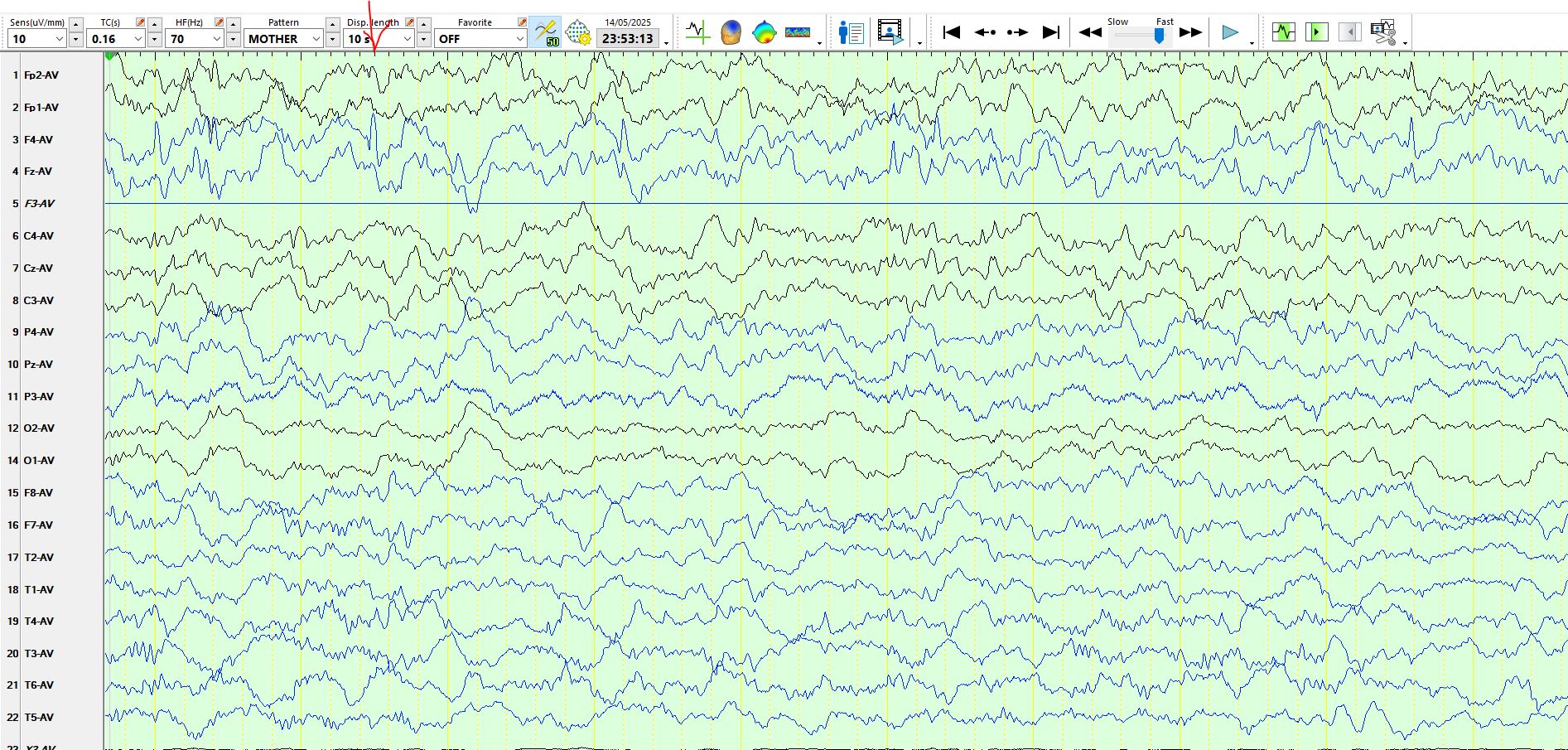Spike in 1 electrode only vs electrode artefact
Jun 24, 2025This can be tough. Really tough. Rule of thumb? Don't call them spikes if they appear in 1 electrode only! There are exceptions. But be very careful. Even worse, artefacts can appear in adjacent electrodes and look like spikes with a field. I will find them for you at some stage. Rule 2? Check it out on a bipolar montage. Rule 3? Wait for sleep. Rule 4? Read rule 1. This matters a lot! I will keep reminding you Red alert
What do you make of this fellow?
Above: This fellow is tall and seen at F4, yet not at FP2 or C4 or F8. There is a second lower amplitude apiculate wave a few hundred milliseconds prior to this at F4. Spike or artefact? Unlikely part of the background. So, despite its amplitude, wait (Rule 1).
See above: Then revert to Rule 2, a bipolar montage. Here you can clearly see the electrode artefact at F4 (see the red lines at the top that demarcate the characteristic "coming together", attributable to 1 electrode only. Artefacts often appear very geometric (see the line just below the word "slow"). Hence, we have an electrode artefact at F4. Don't be too quick, there may be an electrode artefact and a spike in the same electrode? True, but you are in tiger country if you call a spike which appears only in a channel that is artefactual. Never do that! Rule 1 applies.
See above: When viewing the same wave on a coronal montage, the picture changes yet again. The wave appears at F4-FZ. That is the field of a cortical discharge. The odds are in favour of a spike. But wait for more. The scientific method is most robust when something is reproducible. Btw, if you look at the very top image, you will see a tiny upward deflection at FZ.
See above: it is reproducible in sleep too.
The above fellow again is at F4, but the field involves FP2. Your certainty that it is a spike is now high.
If there was any doubt, it is gone. There are 4 of these waves on 1 page, not attributable to an artefact, distinct from the background and impossible that they are asymmetric F-waves.
The above arrowed wave is simply corroboration for what I said at the outset. These can be tough. This high amplitude wave is virtually only seen in 1 electrode. Remind yourself of Rule 1.
Importantly, the similarity of the waveforms enhances the notion that one has "reproducibility". Artefacts tend to vary more than spikes do in their morphology. A final point is that spikes do not always have an after coming slow-wave, but this requires you to be a good deal more cautious than when there is no slow-wave.
Another example of a spike in 1 electrode.
V-waves (arrowed above)), Not everything that is sharp is a spike. The spikes are at F4 again.










